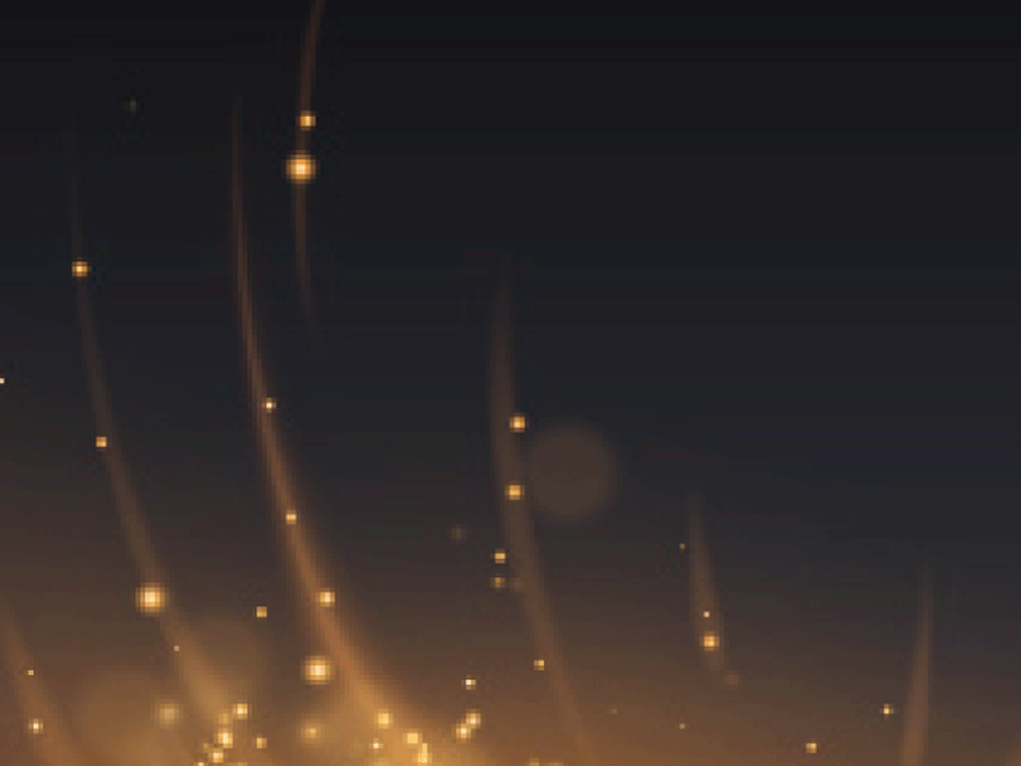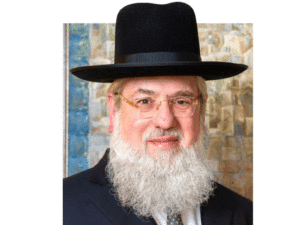When I have the privilege of being mesader kiddushin at a wedding, especially with a more modern couple, I share with them that their marriage is like Klal Yisroel at Har Sinai. The Tashbetz teaches that many, if not all, of the minhagim under the chupah, including the chupah itself, flow from Mattan Torah. I have found over the years that some of the Modern Orthodox mechutanim and the chosson and kallah themselves are reluctant to walk down with lit candles. Some of them think that this is quaint and unnecessarily ancient-looking. I explain that this custom symbolizes the replication of the great marriage 3,300 years ago of Hashem Himself and Klal Yisroel, when the mountain burned and shuddered because of the presence of the Shechinah. Sometimes this is convincing, sometimes sadly not so much.
But we must ask ourselves the question of why Hashem required the thunder, lightning and seemingly threatening scene at Mattan Torah. We had already declared naaseh venishma, being ready to accept whatever Hashem ordains that we must do. Why the frightening phenomena?
One answer given by many seforim is that while Klal Yisroel was willing at that moment to accept the Torah, there would be many days and moments ahead when we might have reason to reconsider. Hashem knew that there would be persecution and threats of annihilation. There would be empires arrayed against us and we would have to be strong. The Crusades loomed ahead, as did the Inquisitions and Expulsions. There would be Tach Vetat in 1648-49 and the Holocaust in Europe, and we needed to know immediately that keeping the Torah would not be easy. Thus, we stood under the mountain, the fire in our eyes, the sounds of thunder shaking us to our very being. And yet, we wanted and accepted the Torah out of love and joy. The Torah, like marriage, must be accepted for all circumstances, when life is easy and when it is not. We accepted the Torah in a tempest, but it prepared us for our entire future until the Great Redemption.
This concept has been said to explain the enigmatic conversation between Hashem and Moshe Rabbeinu at Sinai. The Gemara (Shabbos 88b) reports that the angels protested our imminent receipt of the Torah. Instead of responding to them, Hashem ordered Moshe Rabbeinu to do so. He, in turn, expressed fear for his life because of their blazing fire. Hashem therefore offered Moshe the option of holding unto the Throne of Glory as a safety zone, so that he could answer their complaints. A number of questions have been raised about this exchange. First of all, why didn’t Hashem answer the angels Himself? Secondly, how does seizing the Kisei Hakavod protect Moshe while he defends the decision to give Klal Yisroel the Torah?
The Chasam Sofer answers that the one who reaches the Throne is the one who has been the most successful in elevating the glory of Hashem in the world. Moshe’s answer to the angels is that he has reached the Throne precisely because he has been tested in the real world and has made a kiddush Hashem. He resisted the lure of living in the royal Egyptian palace. He resisted the prohibition to help the Jews live and contributed to their well-being. He overcame many of the desires that bring down lesser mortals and so enhanced the power of heaven in this world. The reason Hashem wanted Moshe to answer the question that had been addressed to Him is so that Moshe would fight for his people.
Life is a battle zone and life for a Jew is a constant war. When the rabbi in the Kuzari is attempting to prove to the as yet unaffiliated Khazar king that Judaism is the true religion, he points to Moshe’s fearlessness in facing danger and indestructibility when defending his faith. At that moment, Moshe Rabbeinu was the embodiment of every Jew who stands up for his religion against all the odds thrown at him by a hostile world. That, too, is included in the event known as Mattan Torah.
When I was a rov in Cleveland, I heard the story of the Jew who complained to the mashgiach of Telz about his miserable life. He tearfully recounted the darkness of his life, with a litany of failures and tragedies. The mashgiach responded with a culinary tale. “Today,” he began carefully, “I ate some peanuts. One of them had a hole in it, where a small worm lived happily. It thought that the entire world was its dark hole inside the peanut until I disturbed his tranquility by destroying his home. Since he didn’t know that there was a gigantic world outside of his serene universe, he thought that all was suddenly lost. However, instead, a whole new world had been opened up for him.”
The mashgiach concluded, “A person who is immersed in the vicissitudes of this world – with all of its challenges and desires – thinks that the world is limited to the physical needs and desires he is experiencing. But we must all know that the true world is a much brighter and expansive place than what we see with our limited senses and abilities. We must elevate ourselves and see beyond our little cocoon or peanut-sized universe. Mattan Torah opened our eyes and ears to new sights and sounds. We suddenly discovered the spiritual world that had been hidden from us before the mountain went up in the air and the limitless spiritual cosmos appeared before our eyes.
We should add to this ancient description some more contemporary images. Some books of optical illusions teach us how to see sights that are hidden at first from our untrained eyes. After a bit of training, we can see people, pictures, opportunities and wonders that were always there but had been invisible to our immature eyes. After Mattan Torah, we, too, saw everything differently. Another metaphor is the first time we look into a microscope and realize that there is an entire world of living creatures – some helpful, others detrimental – living outside and even inside of ourselves. That new vision changes everything. So does Mattan Torah.
Shlomo Hamelech (Koheles 2:14) says that a wise person has eyes in his head. The meforshim ask: Doesn’t everyone have eyes in his head? Where else do eyes belong?
The Metzudas Dovid explains that this metaphor teaches that wise people are able to look far ahead and see the consequences and ramifications of our actions. That allows them to make correct decisions for themselves and to advise and warn others as well about coming dangers.
When people marveled at the Brisker Rov’s ability to predict the future, he laughingly rejected the compliment. “My father [Rav Chaim Soloveitchik] could see at least ten years into the future. I can merely identify what is in front of me.”
Either way, our sages are referred to as the “Eyes of the Nation” because of this ability to understand events and their effects. One of the bi-products of accepting the Torah completely and absolutely is to see clearly what is before us and often what is up ahead as well.
It is well known that the Vilna Gaon said that one who knows how to glean from the Torah properly can read the entire history and future of mankind from its words and pages. We rarely have this ability, but some of the more recent computer word and letter studies of the Torah have revealed some of its inner mysteries. Thus, as is well known, we now realize how the execution of ten Nazis at Nuremberg was predicted long ago in Megillas Esther. Other world events have been discovered in various “Codes” in incredible detail and precision. However, the Torah that we study daily is far beyond such interpretations. It is the holiness and purity that the Torah grants us, as our bodies and souls become elevated through the study of its pages and sanctified words and letters. As the secular world, especially classic academia, crumbles around us, our Torah Hakedosha becomes all the more unique and pristine even to the casual observer.
In short, the more that we shtell tzu – identify – with Mattan Torah and our own Kabbolas HaTorah, the more we will benefit in multiple amazing ways. We can see better and further. We can understand why we are here on earth and often why we are suffering so from our enemies. We can understand our past and even our future. And most importantly, we can live productive lives that are significant each and every moment of our lives. Let us therefore embrace the Torah on Shavuos this year, cherishing each opportunity to learn her words, observe her ways, and mold our lives according to her wisdom, kedusha and way of life.







